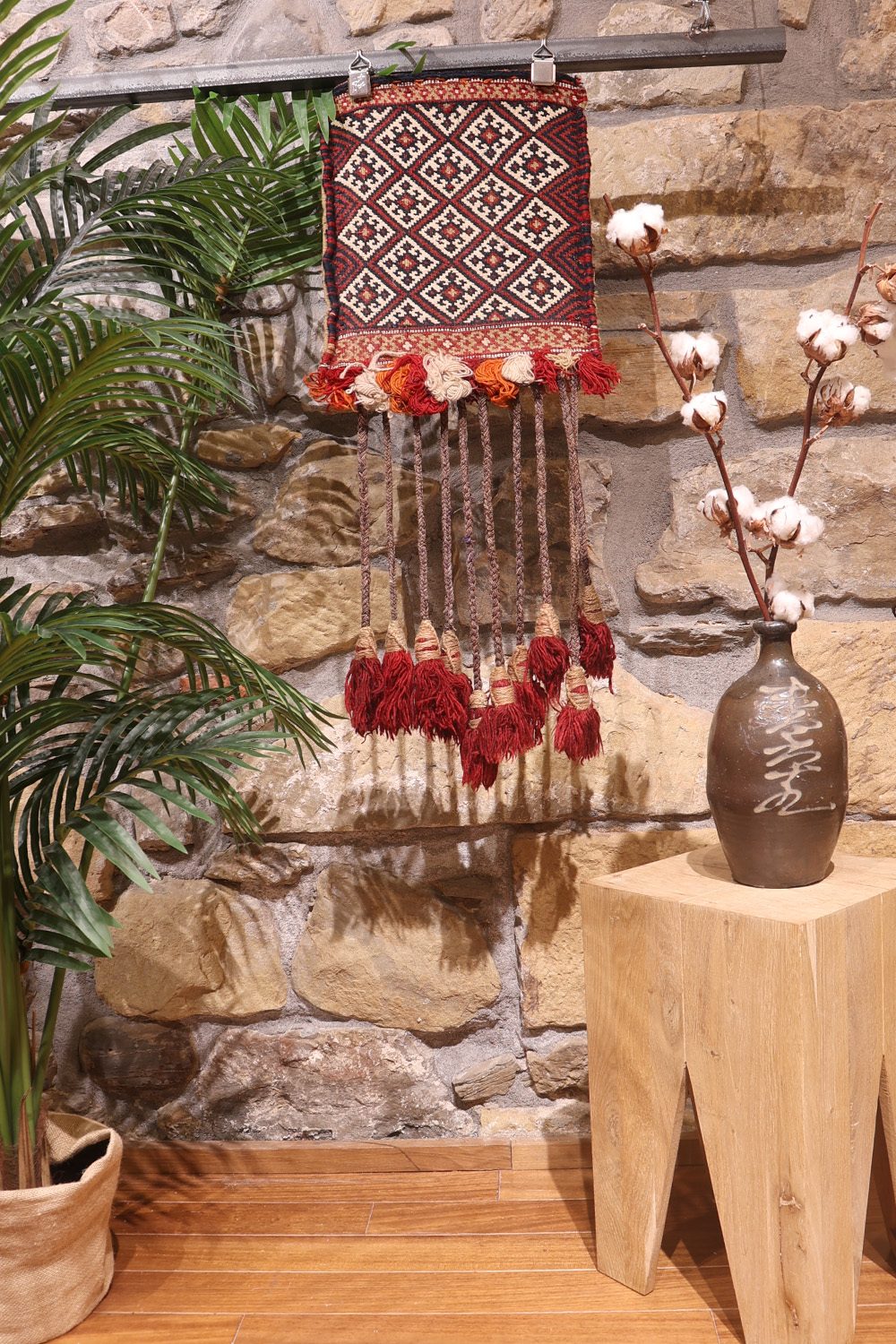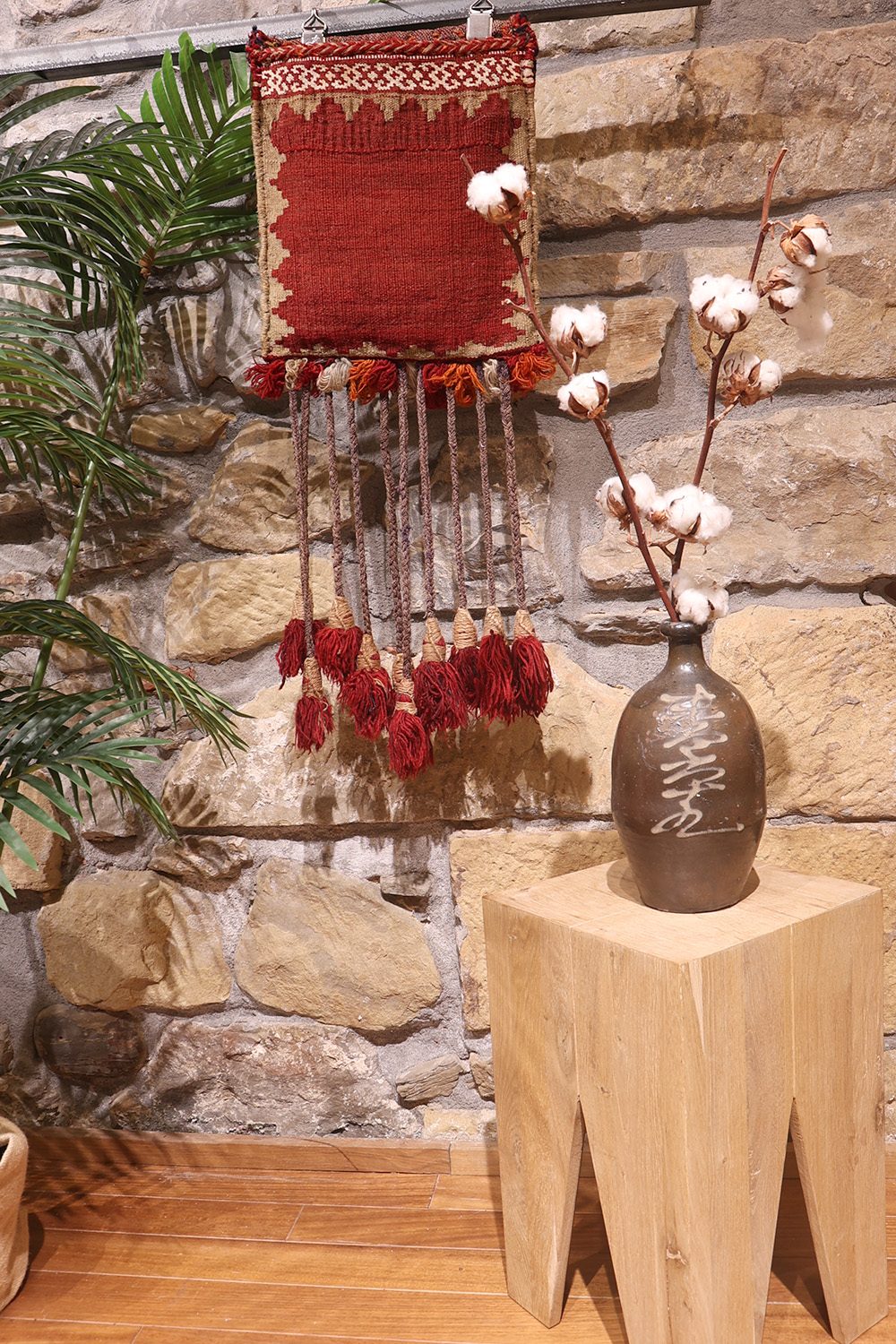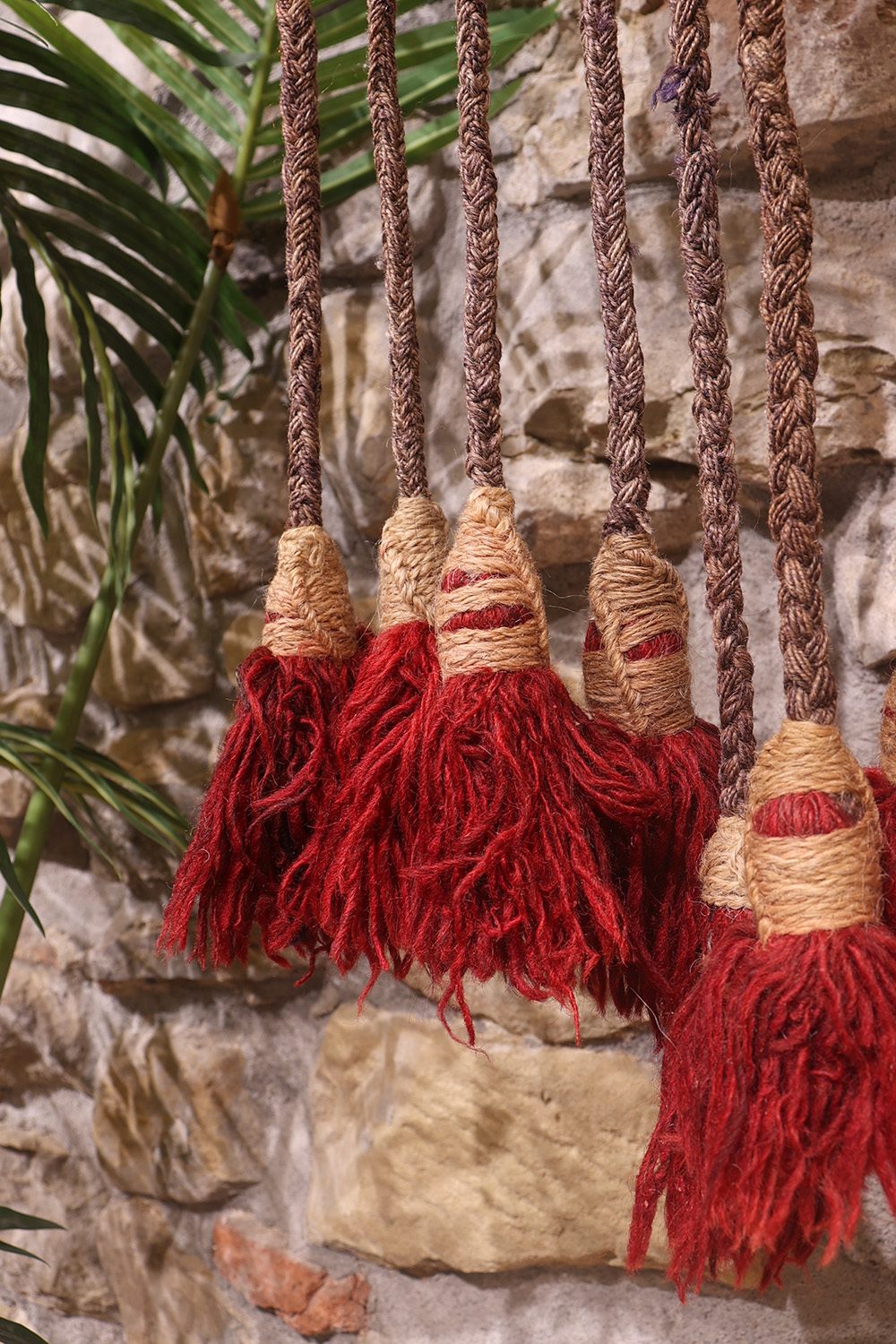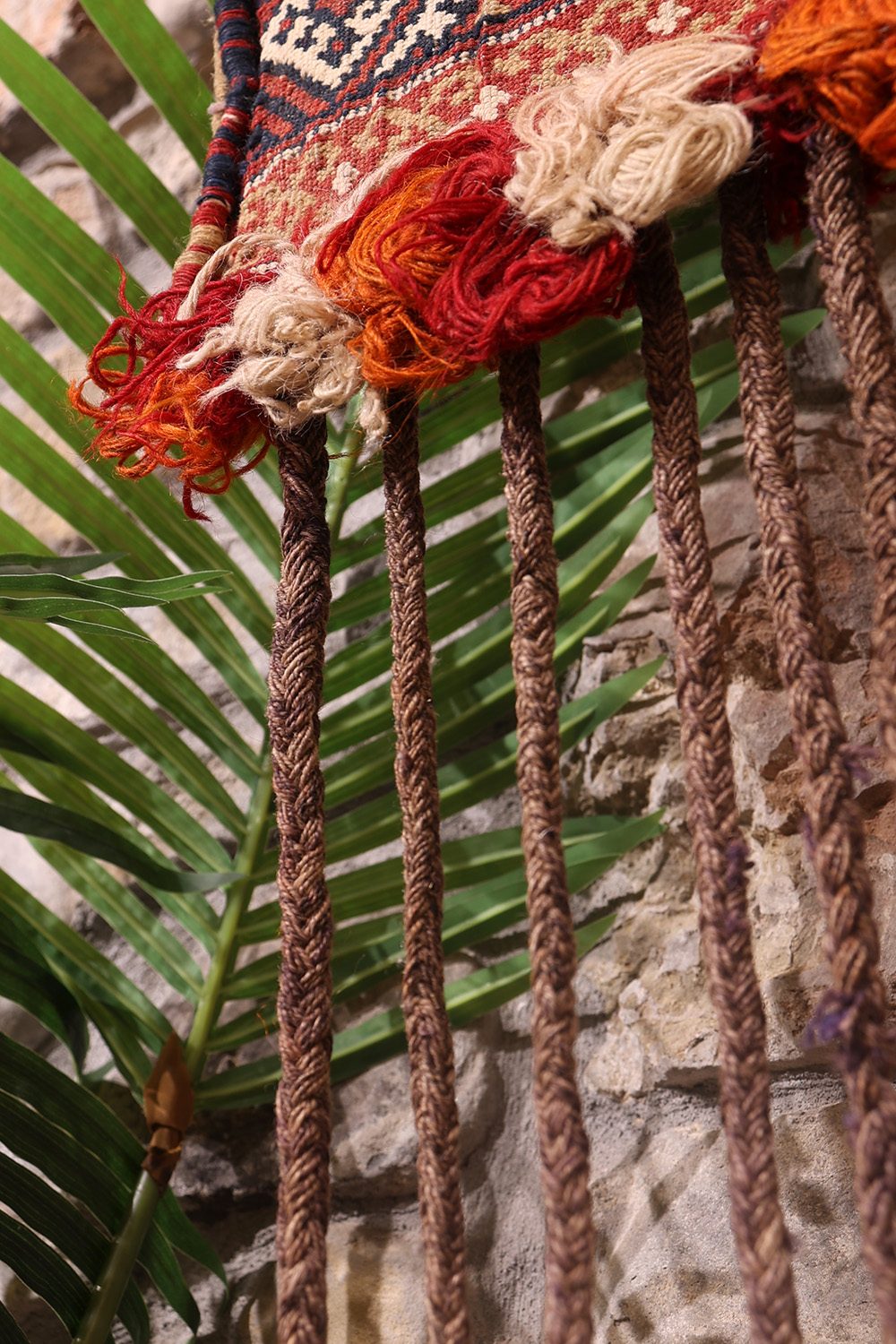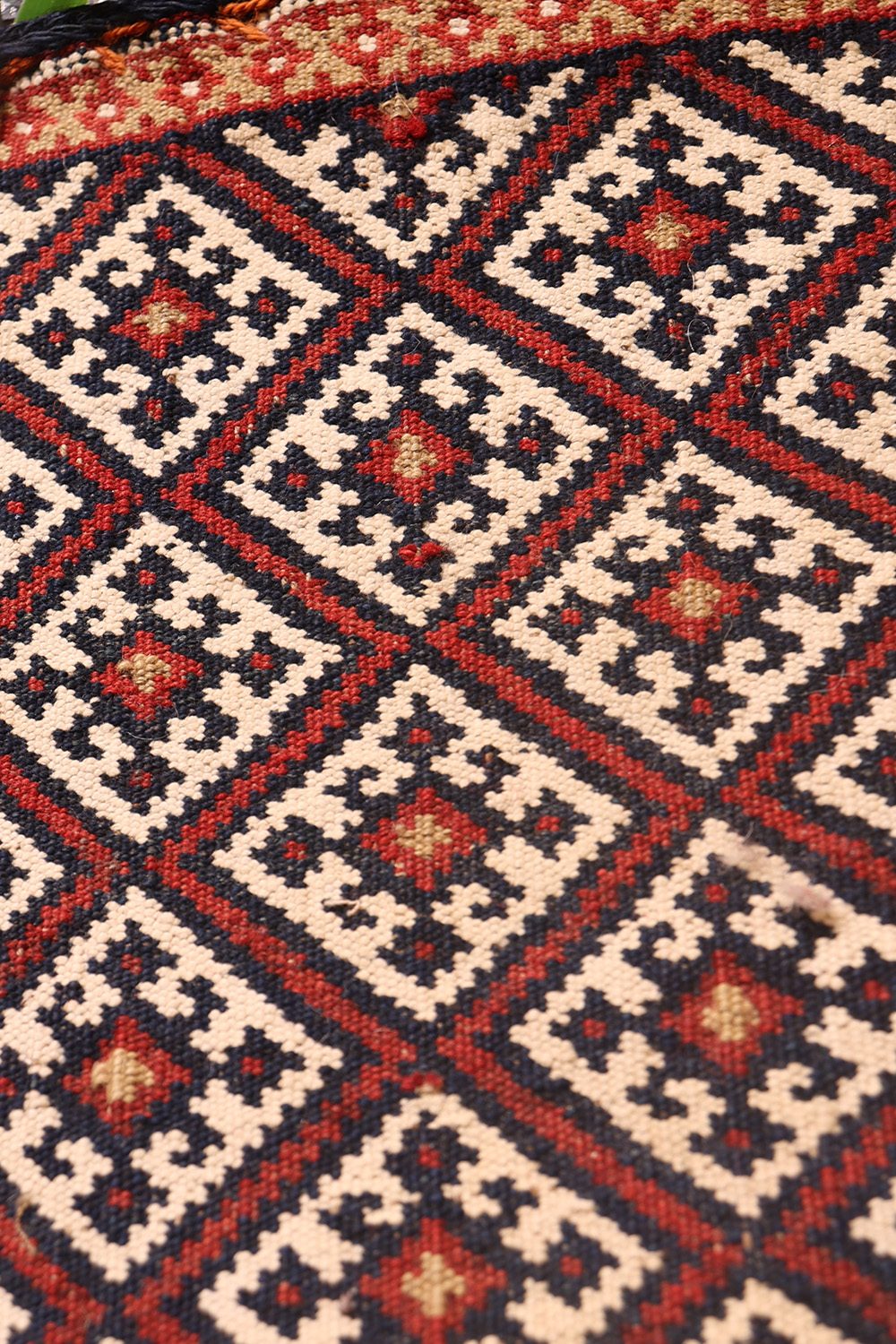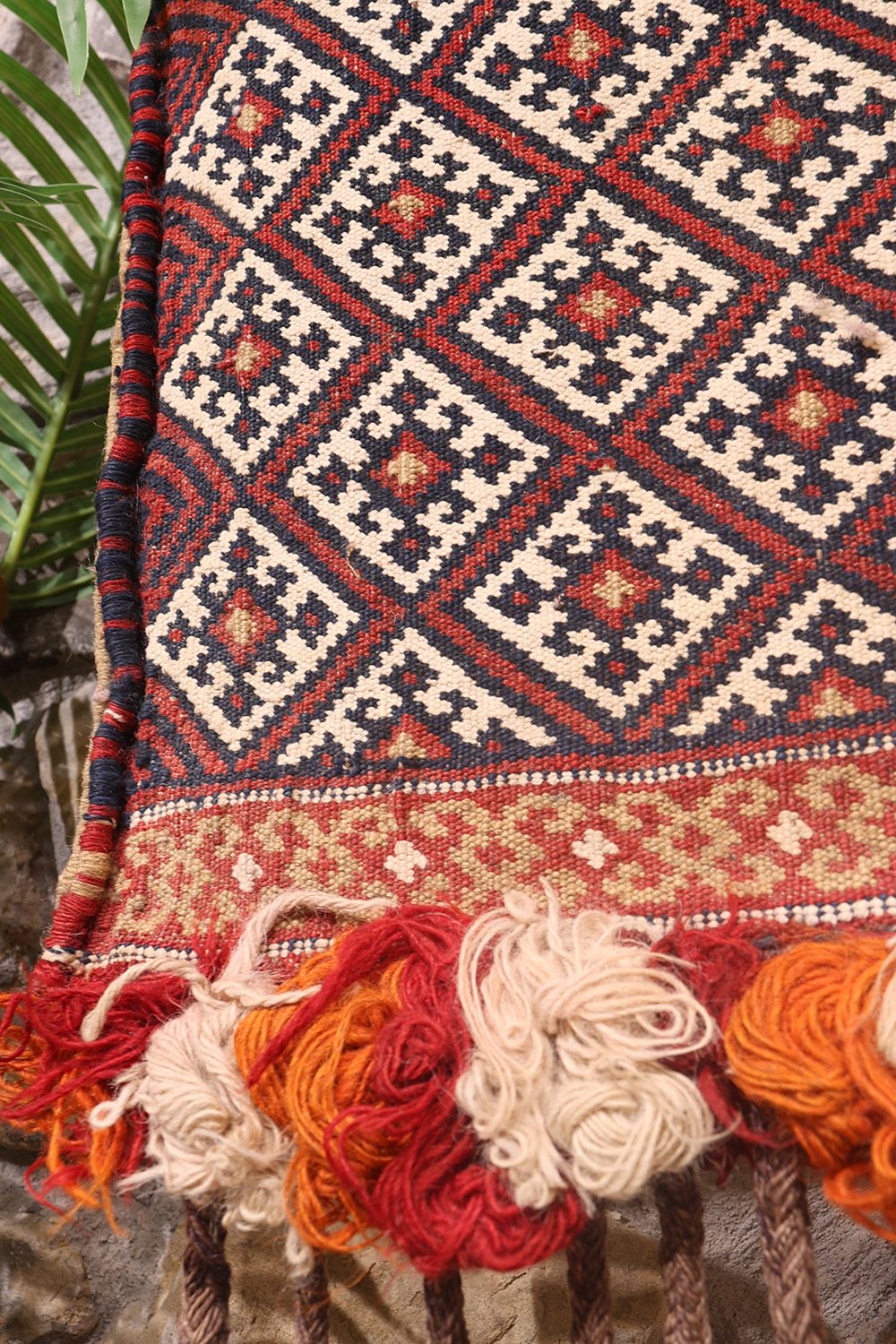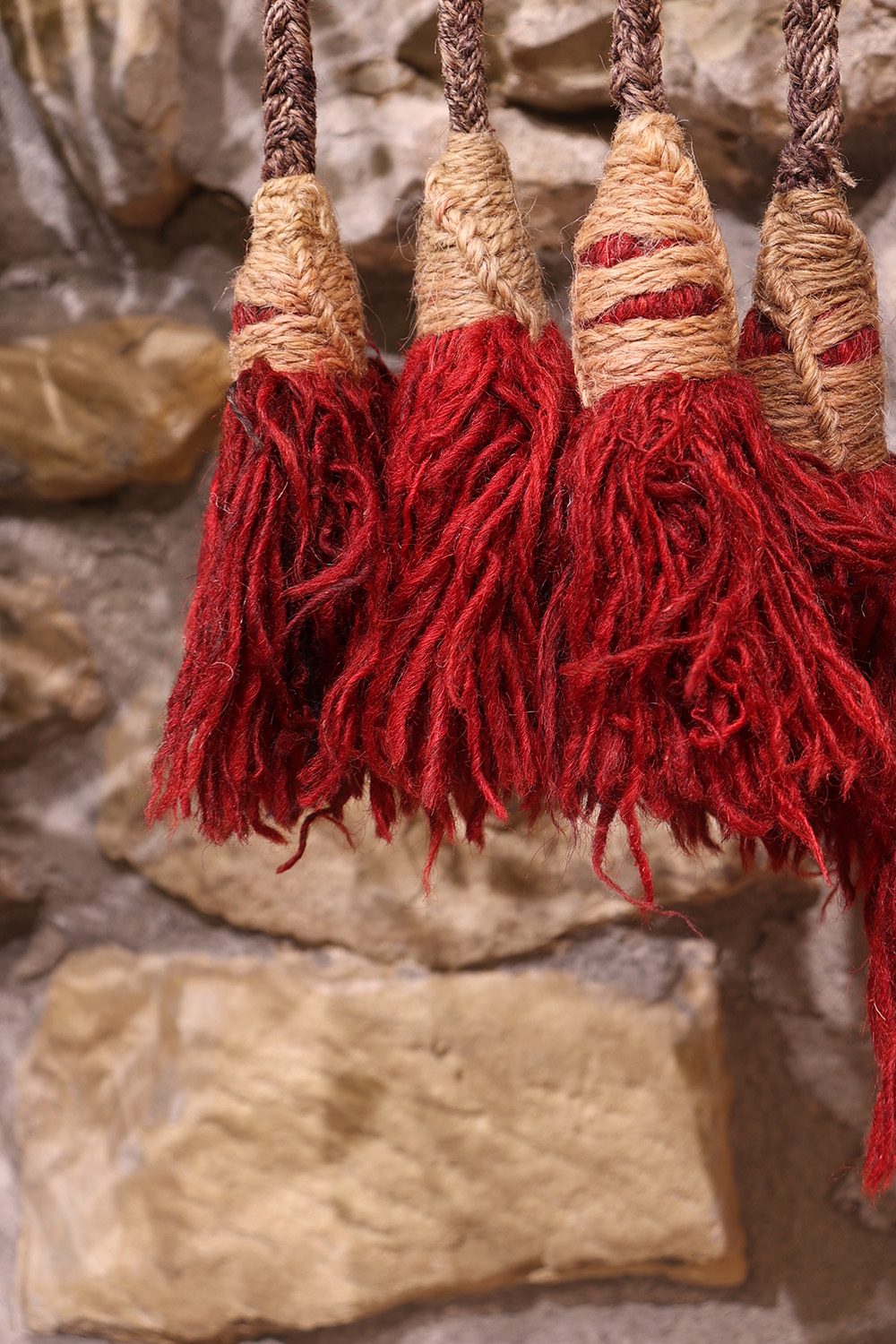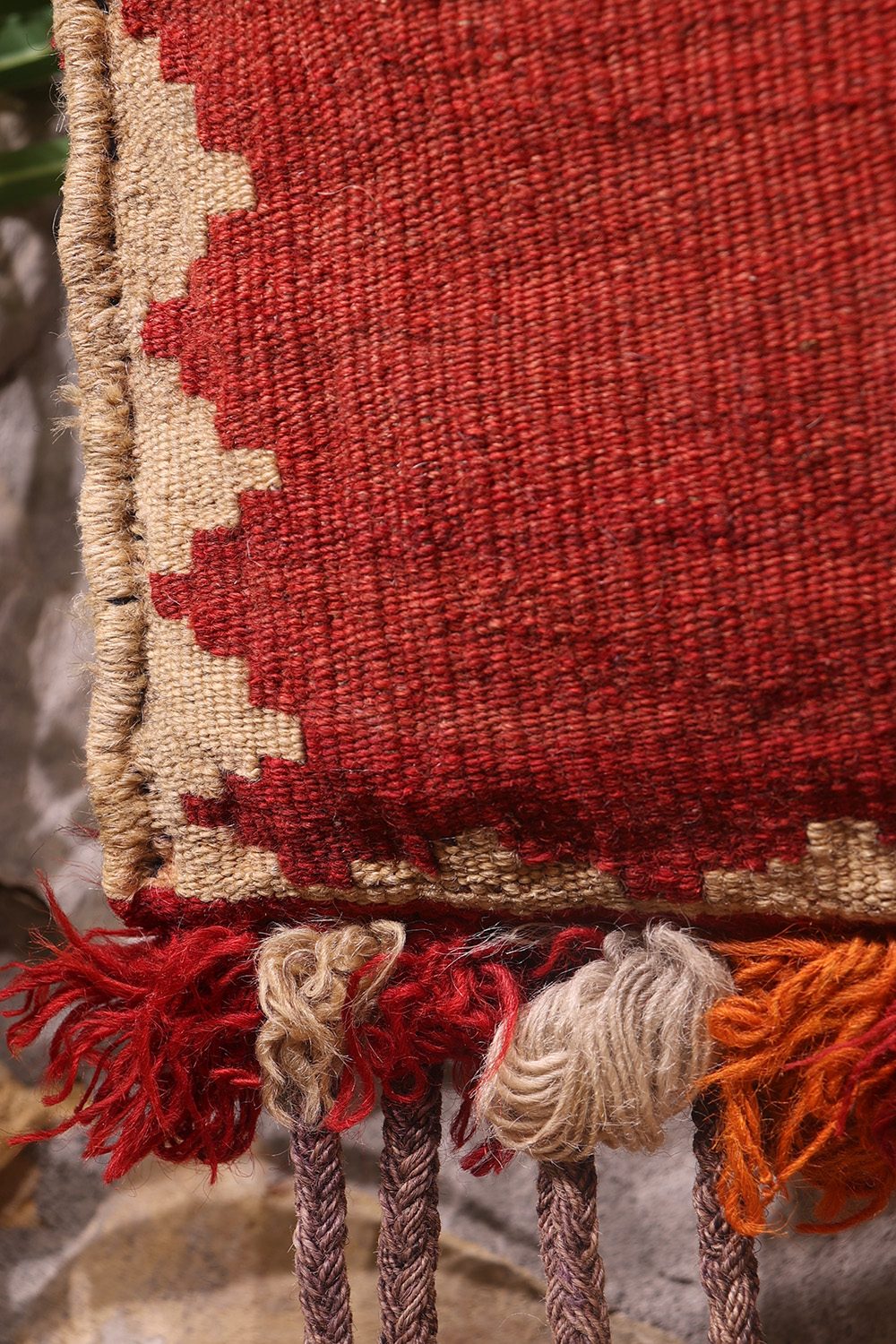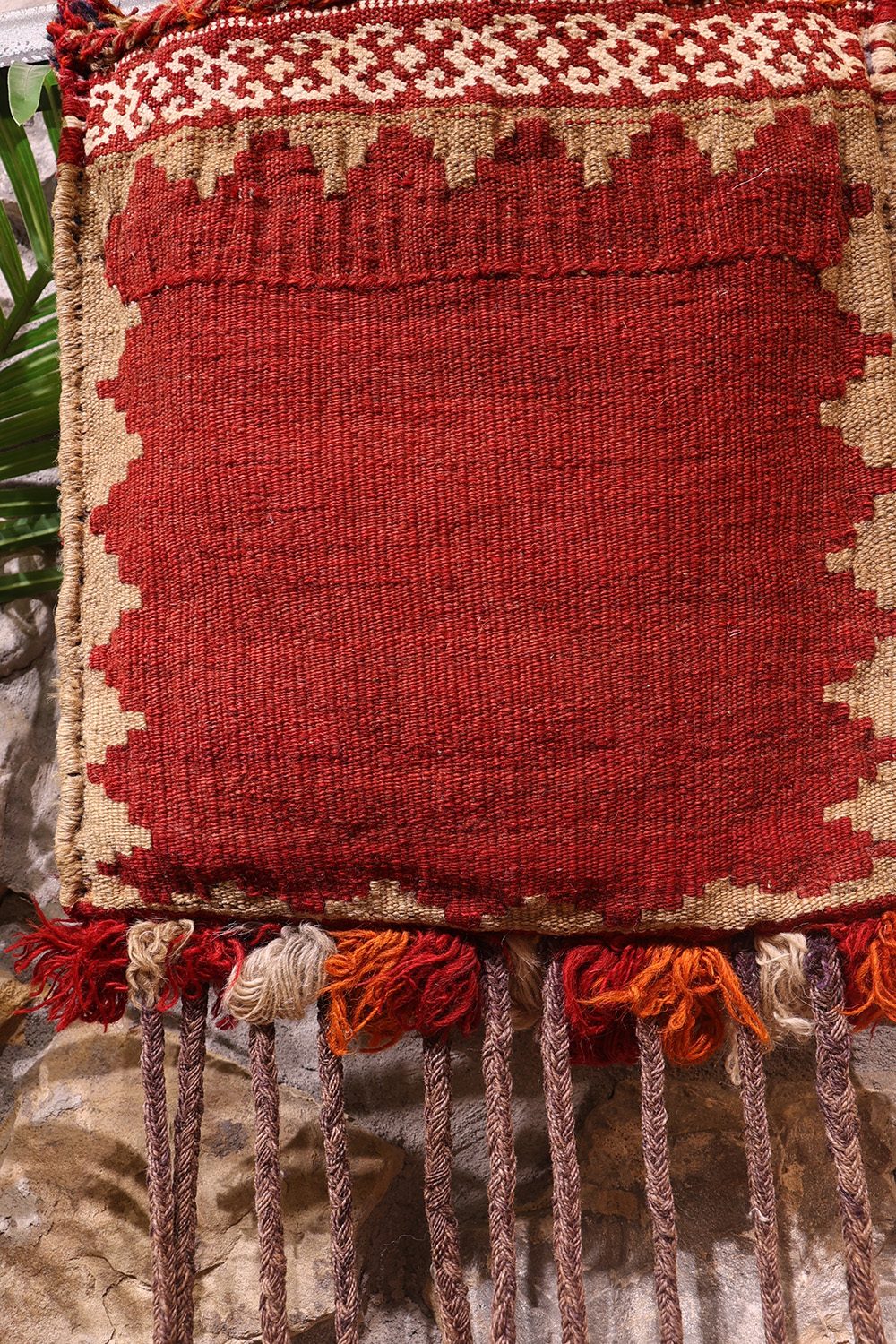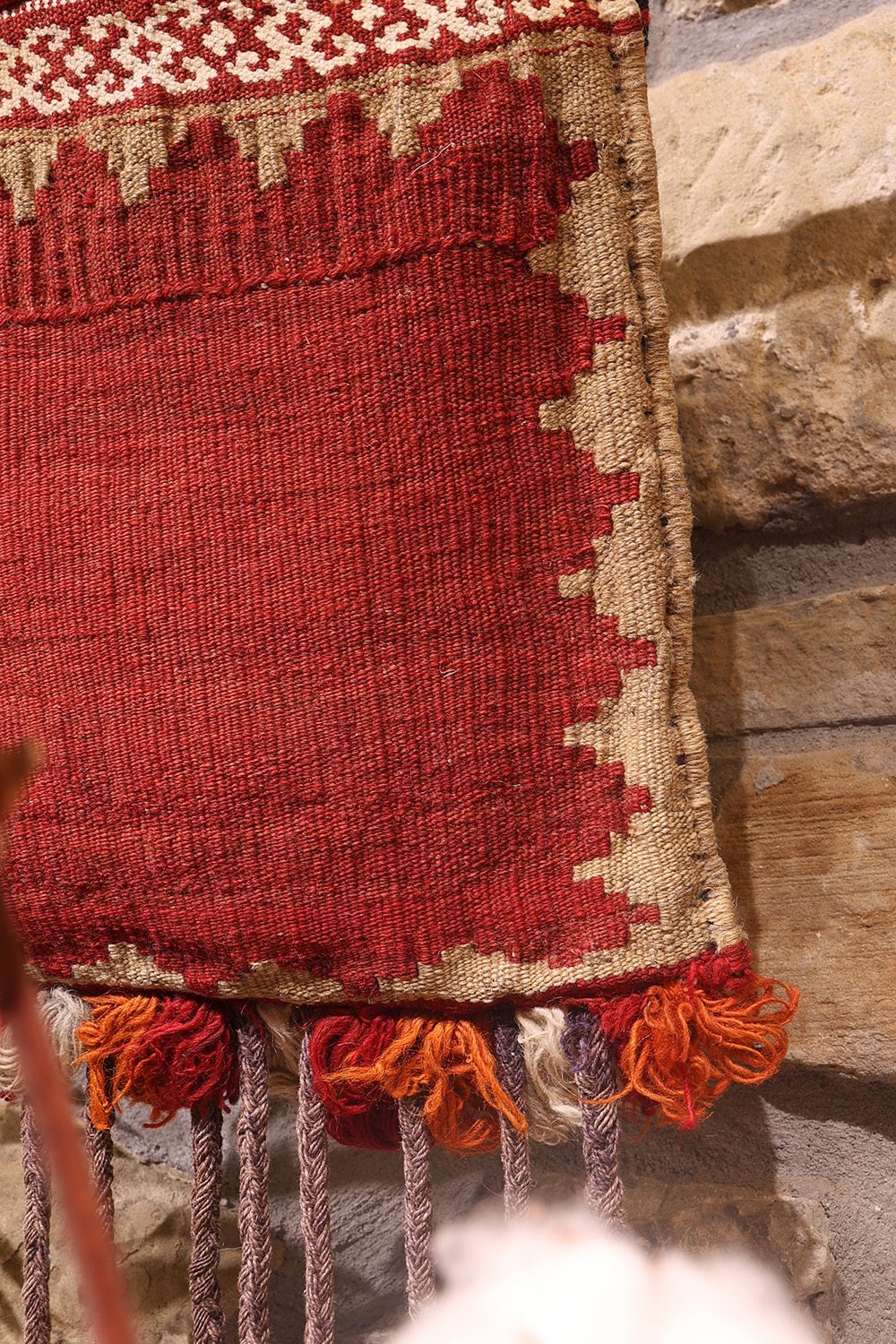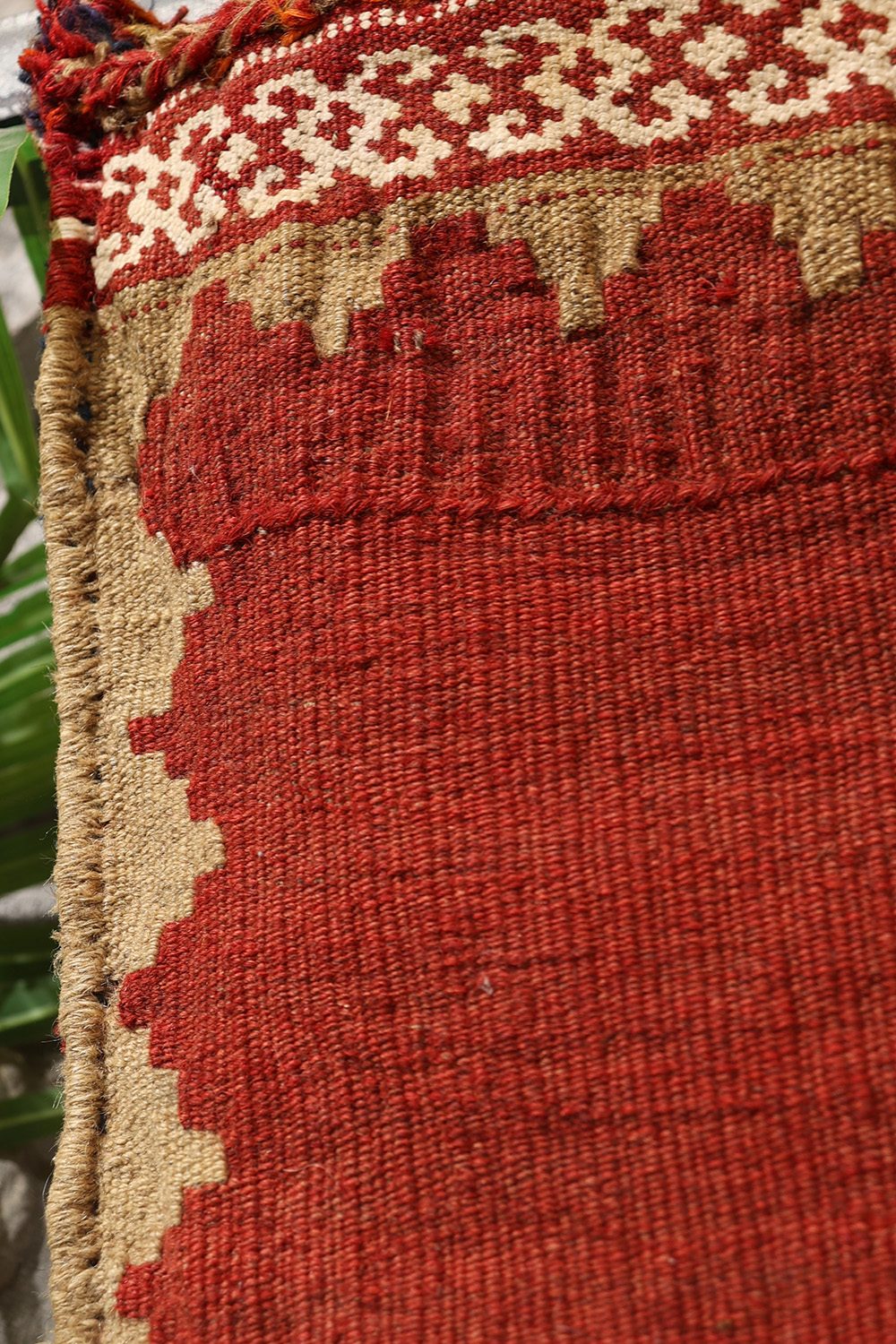A neat chantah or bag from the 1940s woven by a Qashqai woman from South West Iran. The pattern is a grid that occupies the whole surface of the bag, with only two borders at the top and bottom. The tassels are very well done. The baack is plain and elegant. All the dyes are natural.
Material: 100% hand-spun sheep wool and cotton in the white areas
Size: 37×33 cms
Origin: Qashqai tribe, Iran
Date of weaving: 1940s
Chanteh represents any small knapsack that is smaller than a saddle-bag. It is not usually a pair but a single independent item whether with a neck pendant band or, like a saddle bag, with a “lock and key”, and a “band and band-loops”. Tribal women weaved Chateh to provide a kind of wallet, knapsack or bag for their husbands and children. In the Chanteh they put money and provisions for the road, Chopogh (pipe with a long stem) and tobacco, cartridge and gunpowder poach, and other personal supplies and instruments…or things like scisors, needle, thimble etc. The coins, a small mirror and documents were also put in the chanteh.
Because of the special texture and personal use, the small chantehs follow almost no common rules and regulations; the weaving scheme, design and method vary as much as the dimensions and sizes. Also, due to the limitation of design space, the medallion and corner motifs, which is the principal motif for most rugs, it is very rare in most chanteh. The main motif is limited to one single pattern.
1 in stock
| Weight | 1.1 kg |
|---|
